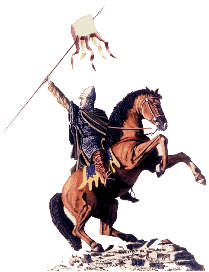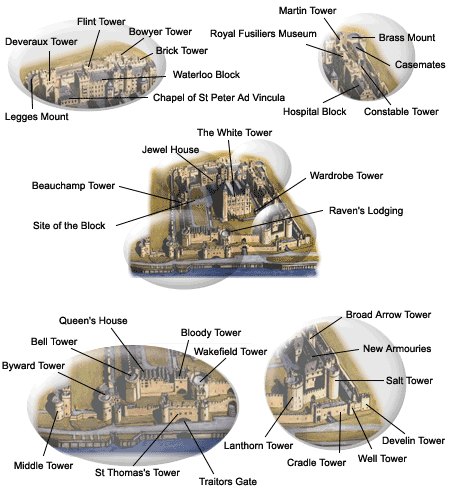The Tower of London - a Brief History

The Tower of London is by far one of the most famous and well preserved historical buildings in the world. From its earliest structural beginnings by its founder William I of England better known as William the Conqueror 1066-87, the Great Tower or White Tower as it later came to be called was fast becoming the most talked-about building in England. The White Tower was also the most awe inspiring, and frightening structure to the Anglo-Saxon people who were trying to get used to the rule of their new Norman king, the destroyer of their own ruler, Harold II, at the in 1066. Within three months of his victory William the Conqueror had begun to build a castle on the north bank of the river Thames in London.
Beginning life as a simple timber and earth enclosure tucked in the south-east angle formed by the joining of the original east and south stone walls of the old Roman town of Londinium Augusta, the original structure was completed by the addition of a ditch and palisade along the north and west sides.
This enclosure then received a huge structure of stone which in time came to be called The Great Tower and eventually as it is known today The White Tower. This formed the basis of a residential palace and fortress ideally suited for a king or queen and as history has shown, to its regal occupants the Tower of London became the perfect all purpose complex. Since the first foundations were laid more than 900 years ago the castle has been constantly improved and extended by the addition of other smaller towers, extra buildings, walls and walkways, gradually evolving into the splendid example of castle, fortress, prison, palace and finally museum that it proudly represents today.


Most of Tower hill was once part of the Tower Liberty, that is the area outside the walls which was under the jurisdiction of the Tower and independent of the City of London. It's boundary is now marked by thirty one boundary stones from tower pier around the Hill and down by St Katherine's Way to the Iron Gate Stairs near Tower Bridge. Each stone bears the broad arrow denoting royal ownership.Every third year the Tower's authority is reasserted in the ceremony of the Beating of the Bounds.
As you reach the subway leading to the underground station, you can see the excavated remains of a medieval gate, known as the Tower Hill Postern. Built soon after the completion of Edward I's new moat (circa 1300), the Postern was a subsidiary entrance into London through the city wall, a section of which you can see on the other side of the subway.
As you walk past the underground station you will see on the right the marked site of the scaffold of Tower Hill. Over one hundred and twenty prisoners were killed on the Tower Hill site most by beheading. This was the most honourable way to be killed if you were a noble or gentleman and thousands of unruly spectators would gather to watch the deaths.
If you were of a somewhat lowlier status you could expect a much worse death such as hanging, drawing and quartering, sometimes on the Hill but most often at Tyburn (near the site of Marble Arch). Not all who died on Tower Hill wee convicted traitors. some were burned as heretics, and others hanged as common criminals, as were the last to be killed on the Hill in 1780.